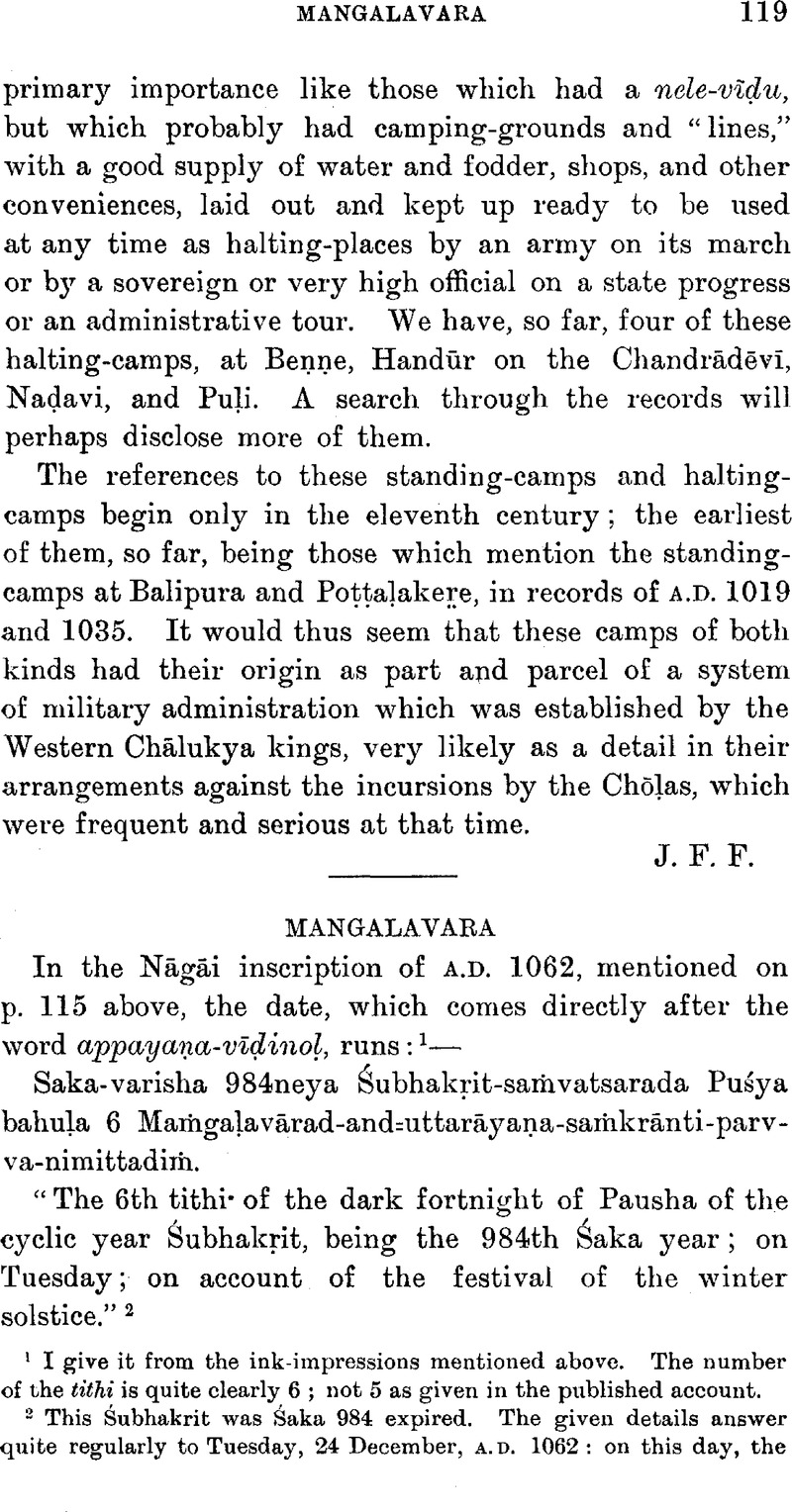No CrossRef data available.

page 119 note 1 I give it from the ink-impressions mentioned above. The number of the tithi is quite clearly 6; not 5 as given in the published account.
page 119 note 2 This Śubhakrit was Śaka 984 expired. The given details answer quite regularly to Tuesday, 24 December, a.d. 1062: on this day, the tithi Pausha kṛishṇa 6 ended at closely about 10 hours after mean sunrise (for Ujjain); and the uttarāyaṇa-satṁkrānti or winter solstice, as marked by the sun's entrance into the sign Makara (Capricornus), was at 9h. 28 m.
page 120 note 1 The earliest known instance of the use of the name Maṅgalavāra is found in an inscription at Kuñche in the Hassan District, Mysore, given by Mr. Narasimhachar in his Archæological Report for 1912–13, p. 30: it seems to date from about a.d. 925 (at any rate, not from a.d. 871–72 as proposed); but the exact year has not been found yet. Elsewhere there are three or four instances from Mysore which claim to come from the tenth century: but the records are of a doubtful kind and require further consideration. It is only from the eleventh century that the name is found used at all freely.
page 120 note 2 The early Indian names of Mars are (1) Bhauma, Kuja, and their synonyms, which mark him as the Son of the Earth; (2) those which refer to his colour, such as Angāraka, Asṛij, Lōhita, Rudhira; and (3) those such as Krūradris, “having the evil eye,’ and Vakra, “cruel, perverse,” which indicate his malefic nature.
page 120 note 3 The adoption of Mangalavāra and Vaḍḍavāra as euphemistic terms, “making us forget the names of cruel days,” is mentioned by the Kanarese poet Ranna (about a.d. 1000) in a verse which was brought to notice by MrRice, in Ind. Ant., vol. 23, p. 167.Google Scholar
page 120 note 4 It was known to Albērūnī (a.d. 1030), who gives Mangalbār as the word for Tuesday, and puts Mangal first among his names for Mars (trans, by Sachau, , vol. 1, pp. 213, 215).Google Scholar